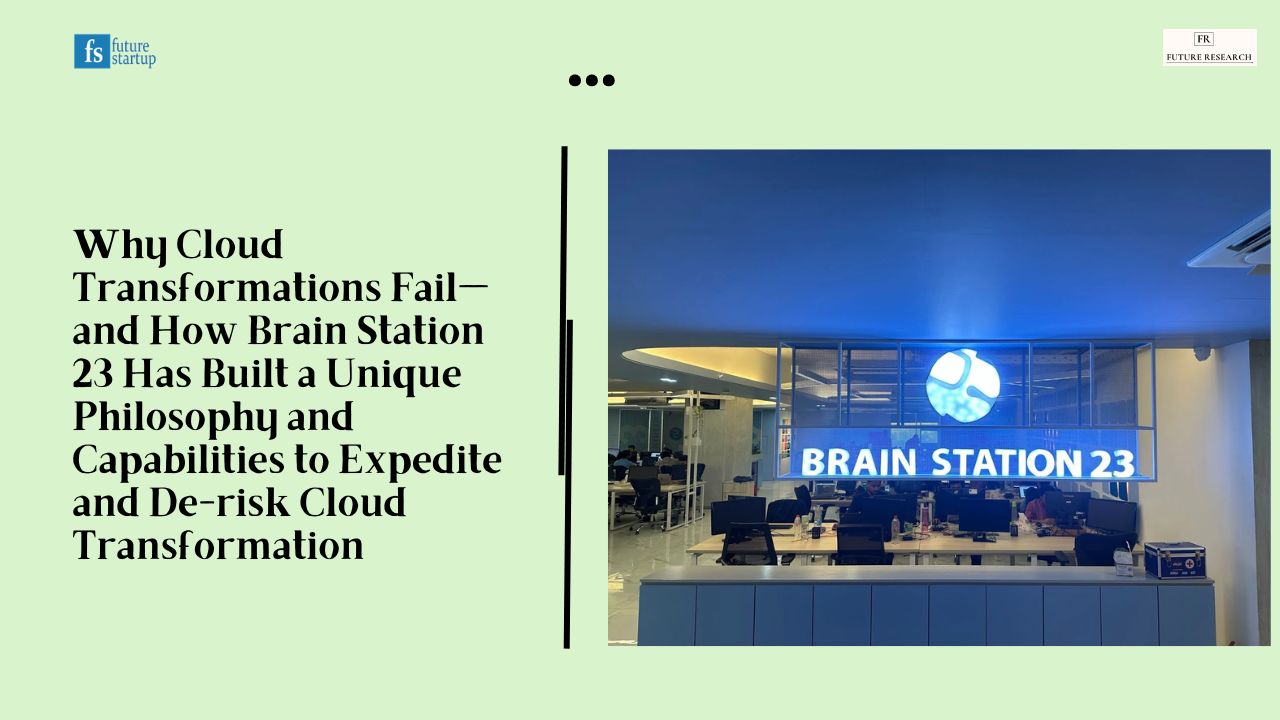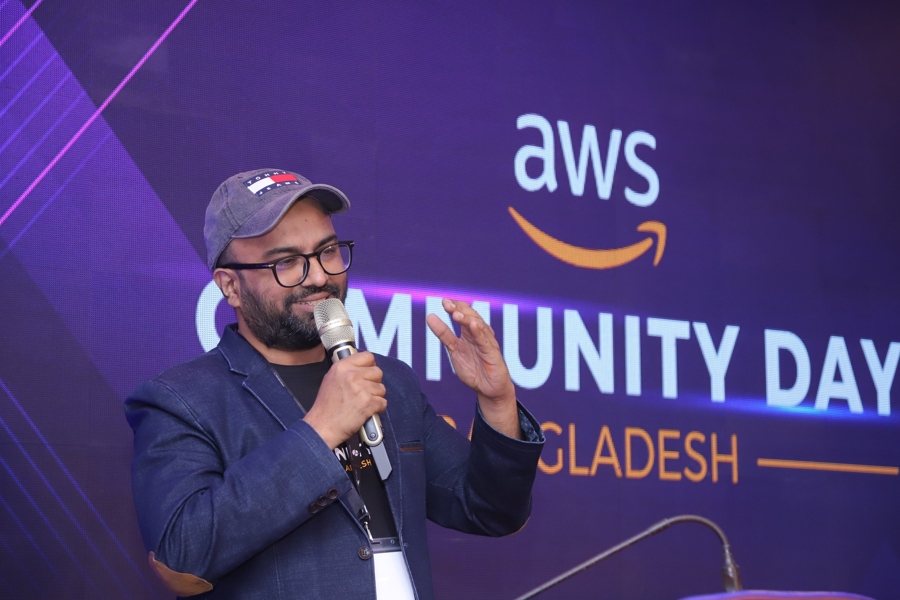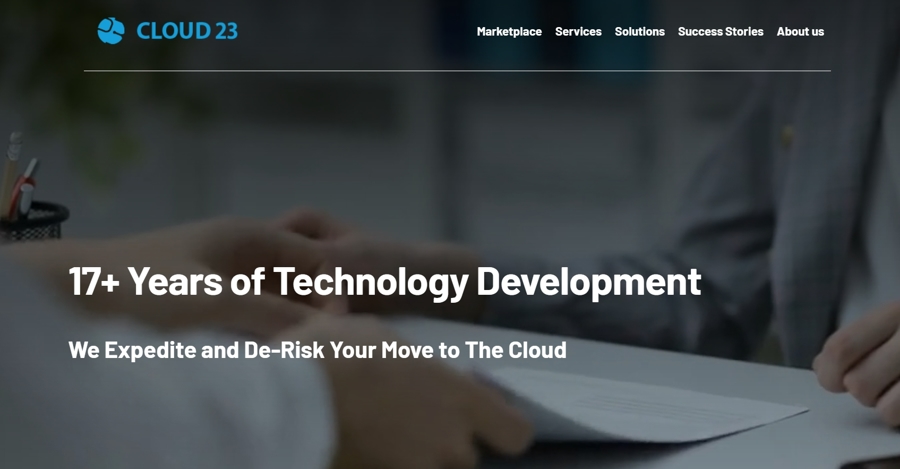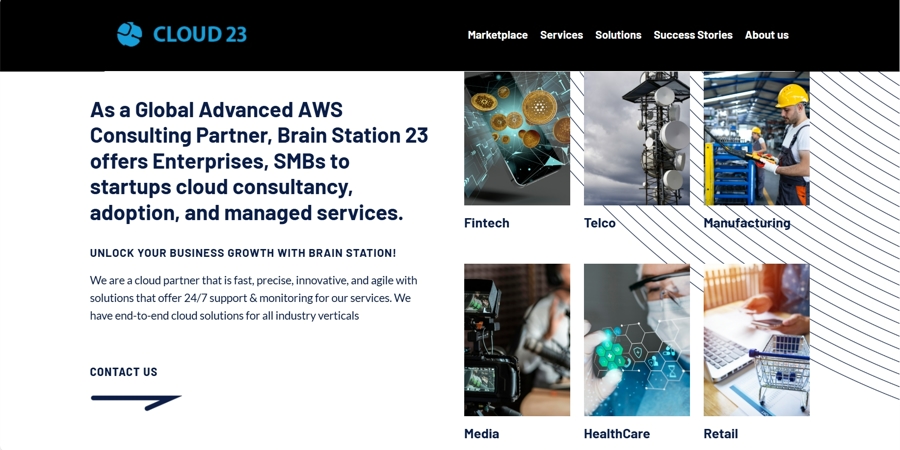
At 3 AM, the development team discovered that an AWS access key — inadvertently exposed by being committed to a public repository — had been compromised by cryptocurrency miners, resulting in an unexpected $30,000 charge within just a few days.
"This is a real case," explains Mohammad Mizanur Rahman, CTO of Brain Station 23, sharing an incident that illustrates why cloud transformations often fail despite sophisticated technical planning.
And this type of incident is unfortunately common in organizations that overlook the human and organizational side of cloud security.
The problem wasn't inadequate security tools or lack of technical knowledge, it was the gap between security best practices and organizational behavior under pressure. The breach could have been prevented with proper access controls, but like many organizations, they had granted full privileges, which while seemingly a minor innocuous decision, came with huge security risk.
For Brain Station 23, cases like these have become proof points driving its philosophy: cloud transformation success depends not only on technical tools but also on aligning processes, behaviors, and governance. This blend of security-first thinking, technical depth, and organizational awareness ensures clients avoid such costly pitfalls.
After nearly two decades of software development and over seven years as an AWS Advanced Consulting Partner, Brain Station has developed deep understanding about why transformations fail and built capabilities specifically designed to prevent these common pitfalls.

Brain Station 23 was founded in 2006 as a small software outsourcing company. Over the nearly two decades of its journey, the company has demonstrated remarkable consistency of high-quality solutions delivery and organizational growth, growing to more than 900 employees and transforming into a global software development and technology partner serving clients across 25+ countries.
This evolution wasn't accidental, it reflects a deliberate philosophy of addressing the complete spectrum of challenges that organizations face during digital transformation.
When the company started offering cloud solutions to its customers a few years into its journey, it applied the same rigor, high standard, and consistency. The efforts have paid off, making it a formidable growing provider of cloud solutions across markets.
Though the company has a decentralized expertise approach to cloud, its cloud solutions operate under a dedicated vertical that embodies its tagline: "We Expedite and De-Risk Your Move to The Cloud" and operates as a "One Stop Cloud Transformation Partner." As a Global Advanced AWS Consulting Partner, the company serves enterprises, SMBs, and startups with comprehensive cloud consultancy, adoption, and managed services across all industry verticals, from FinTech and Healthcare to Manufacturing and Media.
The numbers tell part of the story: 1400+ satisfied clients across the world, 17+ years of technology development experience, and partnerships spanning major cloud providers including AWS, Azure, and Google Cloud. But what distinguishes Brain Station 23 isn't just scale, it's the company’s approach to solving the interconnected challenges that cause most cloud transformations to fail.
Unlike traditional cloud consultancies that address technical implementation in isolation, Brain Station 23 recognized early that successful cloud transformation requires solving organizational, cultural, and business challenges alongside technical ones. This realization has shaped every aspect of how it structures its teams, delivers services, and engages with clients facing complex transformation requirements.
Through extensive client work spanning startups to enterprises, Brain Station 23 team has identified five critical failure patterns that derail cloud transformations and developed specific capabilities to prevent each one.
Understanding these pitfalls and Brain Station 23's solutions reveals why the company’s approach succeeds where traditional cloud consulting often falls short.
Most cloud transformations fail because organizations approach them as infrastructure projects rather than integrated development transformations. Teams migrate applications to cloud platforms without reconsidering how development practices must evolve alongside infrastructure changes.
"There was a time when development and infrastructure were seen as two separate things," Mr. Mizan, the CTO of Brain Station we quoted earlier, reflects. "But in today's era, cloud infrastructure is truly an integral part of development. The developers themselves, in some way, handle deployment, total infrastructure, and ensure the solution is running."
Brain Station 23's solution to this pitfall lies in its organizational structure. Rather than maintaining separate development and cloud teams, it has a decentralized team structure, embedding cloud expertise directly within eight specialized business units—FinTech, E-commerce, Pharma, Telco, Manufacturing, Media, Healthcare, and Retail. "Each team has its own cloud capacity," explains Mizan. "It's not like one central cloud team serves all units; rather, each team has its own cloud capacity."
This structure ensures that cloud architects understand both the technical requirements and the specific business contexts, potential constraints, and performance patterns of each domain.
For instance, when a pharmaceutical company needs cloud migration, Brain Station’s team includes professionals who understand both AWS services and pharmaceutical industry requirements.
Cloud platforms provide sophisticated security tools, but many transformations fail because security configurations don't account for how development teams actually work under deadline pressure. The cryptocurrency mining incident exemplifies this: technically sound security policies undermined by operational convenience.
"A major area is related to excessive access," Mizan explains, describing the most common security misconfiguration they encounter. "Sometimes managers, to avoid repeated requests, grant full access. This is a significant issue."
Beyond over-privileged access, they frequently see reluctance to update legacy systems with known vulnerabilities and databases exposed publicly for development convenience.
Brain Station 23's security approach combines technical expertise with organizational behavior understanding. Dedicated security team conducts vulnerability testing and provides remediation plans that account for operational realities. Rather than imposing rigid security requirements, it helps organizations balance security needs with practical constraints. "An enterprise might afford it, but a startup might not, so there's a trade-off," Mizan acknowledges, demonstrating the company’s understanding that security implementations must align with organizational capabilities and risk tolerance.
"For an enterprise, security is often a critical area," Mizan notes, explaining that security consistently emerges as the most critical pillar across different client types. Its security expertise extends beyond configuration audits to understanding organizational behaviors that create vulnerabilities.
The cryptocurrency mining incident illustrates this: excessive access privileges granted for operational convenience created attack vectors that technical security tools alone couldn't prevent. "This highlights the need to adhere to the principle of least privilege, even if it means more communication," he emphasizes.
Brain Station 23's security assessments address common misconfigurations, including:
As an authorized AWS Well-Architected Framework Review (WAFR) partner, the company conducts collaborative security assessments that educate while auditing. The methodology involves systematic collaboration: "One of our WAFR experts, along with a client-side technical person who understands the solution, sits together with a coordinator facilitating the communication," Mizan describes.
The company’s solution architects guide clients through comprehensive assessments using the AWS WAFR service itself. "You can log in and step-by-step provide feedback based on different pillars," Mizan explains.
The security pillar alone contains over a hundred assessment questions, each designed to identify potential vulnerabilities. "Sometimes, if the client is unsure, we investigate and provide feedback on the spot," he notes, emphasizing the real-time educational value.
The assessment reveals specific risk levels across different areas. "The customer can work on them," Mizan explains. "Critical issues identified in the review can be resolved by the client's internal development team, or if they lack the team, we provide support." This collaborative approach ensures clients understand not just what needs fixing, but why certain configurations create risks.
Cloud transformations frequently fail when organizations adopt popular architectural patterns without considering their specific requirements. The microservices trend exemplifies this: teams implement microservice architectures because they're perceived as modern and scalable, without evaluating whether they're appropriate for their use cases.
"Many people believe that using microservices or serverless automatically makes things scalable and beautiful, but we've seen that everything comes with challenges," Mizan observes. "Microservices are good in many cases, but they might not be the best fit for all."
The challenge intensifies because different client types face different scalability priorities. "It often varies from customer to customer," Mizan explains, describing how WAFR assessments reveal varied challenges. "For an enterprise, security is often a very important area. However, sometimes there are risks that a customer acknowledges but chooses not to act upon."
High availability represents a common trade-off scenario. "AWS recommends a multi-AZ (Availability Zone) or multi-region deployment. But for a startup with budget constraints, doubling the infrastructure means doubling the cost," Mizan notes. "A startup might accept this risk due to budget limitations. For an enterprise, however, compliance and ensuring the solution is always up and running might be more critical than budget."
Brain Station 23's scalability solutions acknowledge these varying priorities while addressing the root architectural issues. "When a customer builds a solution, they might not anticipate a very high user base in the future," Mizan observes. "It can lead to a problem where the entire architecture is built in such a way that it cannot be decoupled." Brain Station’s assessment process identifies these limitations before they become scaling bottlenecks.
For instance, Brain Station’s fleet management project for a European partner demonstrates this balanced approach in practice. The solution required continuous bus tracking, real-time delay alerts, driver applications, and AI-optimized route planning. Rather than applying uniform architecture, Brain Station’s team deployed different solutions for different purposes:
"In the same situation, depending on different conditions, we determine what is the right fit to provide the best value," Mizan notes. This flexibility enables single solutions to combine architectural patterns, each optimized for specific functions rather than following uniform approaches.
Cloud transformations often fail because organizations expect perfect solutions from launch and resist iterative improvement. This perfectionist approach leads to over-engineering, unnecessary cost increases, delayed deployments, and solutions that don't adapt to actual usage patterns.
Mizan's honesty about implementation realities distinguishes Brain Station 23's approach: "Is it always perfect from day one? Of course not. We might implement something and then realize there's room for fine-tuning. Since traffic forecasts are often difficult, continuous improvement helps us reach a point that provides a proper experience to the customer and is financially relevant."
This iterative philosophy acknowledges that effective cloud optimization emerges through continuous monitoring and adjustment rather than upfront perfect planning. Initial traffic and usage forecasts are rarely accurate, requiring ongoing refinement based on real-world data.
The WAFR assessment process reinforces this iterative approach. The comprehensive review across six pillars—cost optimization, performance efficiency, high availability, security, operational excellence, and sustainability—generates actionable reports highlighting deployment gaps.
But clients often receive immediate financial benefits: "By participating in this program, they often receive benefits from AWS, such as credits. For example, recently, if you assess and solve the problems identified, AWS might provide you with a $5,000 credit."
Perhaps the most destructive failure pattern in cloud transformations involves coordinating multiple specialized vendors. Infrastructure consultants, application developers, security specialists, and managed service providers each optimize for their own scope, creating integration challenges and accountability gaps that frequently derail projects.
"A cloud-only company might say, 'Get a developer to make the changes first,'" Mizan observes, describing how specialized vendors often leave implementation gaps. "But we offer an end-to-end service: we make the necessary application changes for readiness, handle DevOps, CI/CD, deployment, and as a public cloud partner, we can offer the best value."
Brain Station 23's comprehensive approach eliminates what Mizan calls "the challenges of multi-vendor management where customers often lose out due to blame games between vendors."
Through Brain Station 23, clients can choose between two primary engagement models based on their specific needs:
Resource Augmentation: Brain Station 23 resources work full-time with clients, "performing relevant tasks as if they were the customer's own employees," with monthly payment structures that provide consistent, long-term collaboration.
Project-Based Delivery: For specific scopes, they estimate required hours and execute upon budget approval, suitable for organizations with clearly defined transformation requirements.
This flexibility, combined with Brain Station’s dedicated partner team that "continuously collaborates with AWS" to maintain necessary capabilities and recognitions, ensures clients receive the full value of cloud provider partnerships while working with a single, accountable technology partner.
This one-stop philosophy extends to practical details often overlooked by pure-play cloud consultants.
The company also assists clients with international payment processing for AWS services and provides comprehensive support covering "migration, modernization, maintenance, and partial digital transformation." As Mizan emphasizes: "As a technology partner, we do whatever is necessary, a full 360-degree service."

Brain Station 23's cloud transformation philosophy emerged from observing these failure patterns across hundreds of projects.
The company’s approach centers on three core principles that address the root causes of transformation failures:
Technology agnosticism over vendor lock-in: "We are technology-agnostic," Mizan emphasizes. "We evaluate which platform offers the best value to the customer." Working with AWS, Azure, and Google Cloud, the company recommends based on specific client requirements rather than vendor preferences or consultant expertise limitations.
Incremental adaptation over wholesale change: For organizations beginning cloud journeys, Mizan recommends starting with low-risk transitions: "A complete shift on day one can be a difficult decision, partly due to the risks involved for the business. If they have multiple existing solutions, I recommend incremental adaptation. Start with the lowest-risk solution."
Continuous learning over fixed capabilities: The company’s willingness to master new technologies on client demand prevents the capability gaps that force organizations to work with multiple vendors. "Sometimes, a customer has a specific need for which we might not have immediate capacity. But we are open to learning and deploying it," Rahman explains.
Brain Station 23's cloud services encompass the full transformation lifecycle, addressing the multi-vendor coordination challenges that often derail cloud projects.
DevOps and deployment integration: End-to-end implementation of deployment flows and application integration, ensuring seamless transition from development to production environments.
Security and vulnerability management: Dedicated security teams handle both cloud infrastructure security and application-level vulnerability testing, providing comprehensive remediation plans that address real-world security challenges like over-privileged access and legacy system vulnerabilities.
Deep expertise in AWS Well-Architected framework review: As authorized WAFR partners, Brain Station 23 team conducts collaborative assessments across six pillars—cost optimization, performance efficiency, high availability, security, operational excellence, and sustainability. "Our solution architect and the client's technical team collaborate throughout this assessment," Mizan describes, emphasizing the hands-on, educational nature of their approach. The process generates comprehensive reports highlighting deployment gaps, but the real value lies in immediate education and remediation guidance. Clients don't just receive audit findings; they understand the reasoning behind recommendations and can implement changes with confidence.
Legacy modernization and AI integration: Legacy system modernization represents perhaps the most significant transformation barrier organizations face. Finding developers with expertise in decades-old programming languages like COBOL has become increasingly impossible, trapping organizations with systems they need to modernize but can't afford to replace. To that end, Brain Station’s most innovative service addresses the challenge of legacy system migration through AI-assisted development. Recent projects include converting COBOL applications to .NET and SAP systems to modern architectures, transformations previously considered prohibitively expensive or risky.
Brain Station 23's client portfolio spans from venture-backed startups to established multinational corporations across 25+ countries. This global experience creates unique value through cross-market knowledge transfer and unexpected advantage: the ability to transfer successful solutions across different markets and regulatory environments.
"Because we work with clients in the US, Europe, Middle East, Africa, and Japan, customers working with us gain access to this global knowledge base," Mizan explains.
This cross-market experience enables Brain Station to recognize patterns and provide guidance that extends beyond technical implementation. It enables the company to bring proven solutions from one market to address similar challenges in another, accelerating implementation timelines and reducing risk through validated approaches.
"We offer a feedback loop; it's not just about doing what they ask, but also asking, 'Have you considered this approach?' because we've seen similar experiences in other projects and countries."
With over 100 projects monthly and nearly two decades of experience, Brain Station has developed pattern recognition that helps prevent common transformation failures before they occur. "When a customer presents a problem or scope, we have most likely worked on similar scopes," Rahman notes, highlighting how this experience reduces risk for new clients.
The success of Brain Station 23's cloud transformation approach ultimately depends on talent quality and retention. The company’s "Star Coder Program" receives 5,000-6,000 applications for 60-80 positions twice yearly, enabling exceptional selectivity. "We work with the most talented people," Mizan notes. "When they work with customers, we observe that our people often perform better than those from major technology companies."
Critical to preventing transformation failures is team consistency. "Our low overall attrition rate means that customers working with us get to retain team members for a longer time," Mizan explains, addressing a major pain point where frequent team changes derail complex, multi-phase cloud projects. "We have never fired anyone (unless there's a serious misalignment)," he reveals, highlighting the stability that enables deep client relationships and accumulated project knowledge.
For organizations beginning cloud transformations, Mizan offers several recommendations that directly address the failure patterns Brain Station 23 has observed.
Start with incremental adaptation: "If they have multiple existing solutions, I recommend incremental adaptation. Start with the lowest-risk solution. This allows them to become familiar with the journey and identify areas where readiness is needed."
Enable internal teams: "It's also crucial to enable their own technical team. Sometimes, companies are reluctant to invest in training and enabling their teams." This prevents the knowledge gaps that create vendor dependency and reduce organizational capability.
Work with experienced partners: "Partners have learned from working with many clients, and these learnings can help clients make better decisions and define better processes."
Expect and plan for resistance: "Acknowledge that there will be challenges and resistance, as change is always uncomfortable. But the faster we accommodate it, the more ready we will be for the future."
Mizan's core message reflects Brain Station 23's transformation philosophy: successful cloud adoption requires balancing technological possibilities with organizational realities, human factors, and business constraints.
The company’s nearly two decades of experience solving these intersecting challenges has created a service model that prevents the most common transformation failures through integrated expertise, pragmatic architecture decisions, and comprehensive support that eliminates vendor coordination complexity.
For organizations considering cloud transformation, the choice extends beyond comparing technical capabilities. It's about partnering with providers who understand that successful cloud adoption requires addressing the full spectrum of challenges—technical, organizational, and human—that accompany fundamental business transformation.

That said, if you’re looking for a cloud solution provider and want to learn more about Brain Station 23’s cloud solutions, you can go to their website here. The company has a standard process to successfully deploy cloud solutions. “Clients have different needs at different stages, " explains Mizan when asked about how it works with clients. “For early-stage solutions or existing ones, we always recommend an assessment or audit of their current status as a starting point.”
